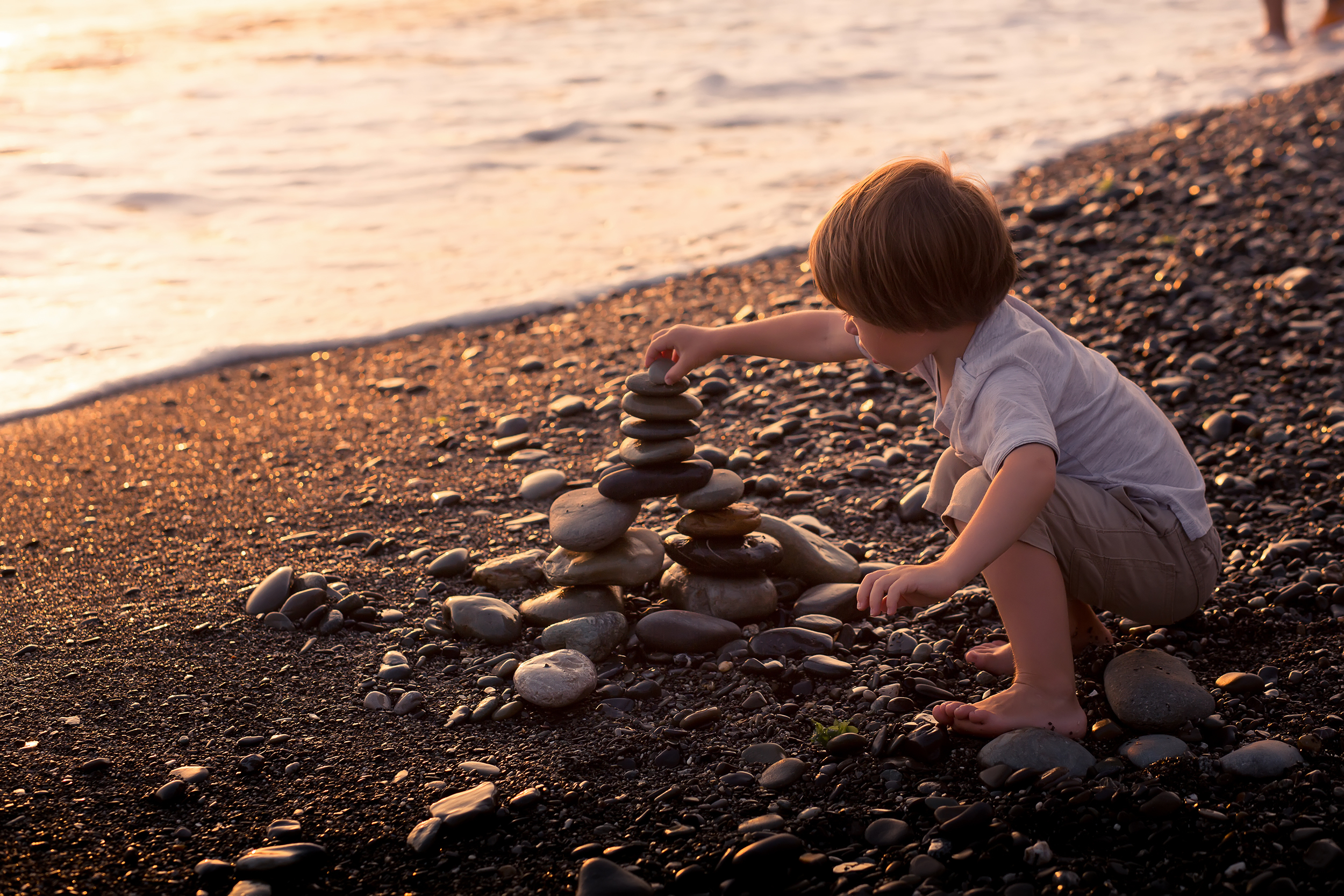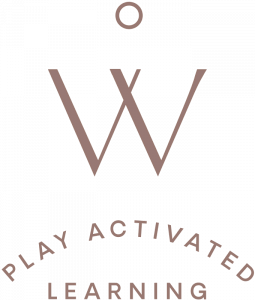To get the most out of loose parts play, it’s helpful to understand the different phases of play that children go through.
According to the work of Janice Beaty, Dr. Kenneth Rubin, and Chris Athey, children go through five phases of play actions from infancy to early childhood. These phases are cyclical, and children may move back and forth between them.
For each phase, we want to look at the actual use of the objects – i.e., the loose parts.
Here are the five phases, along with examples of play actions and the inner drive that motivates them:
“We should have busy children, not busy toys!”
Magna Gerber
Phase 1: Sensory Exploration
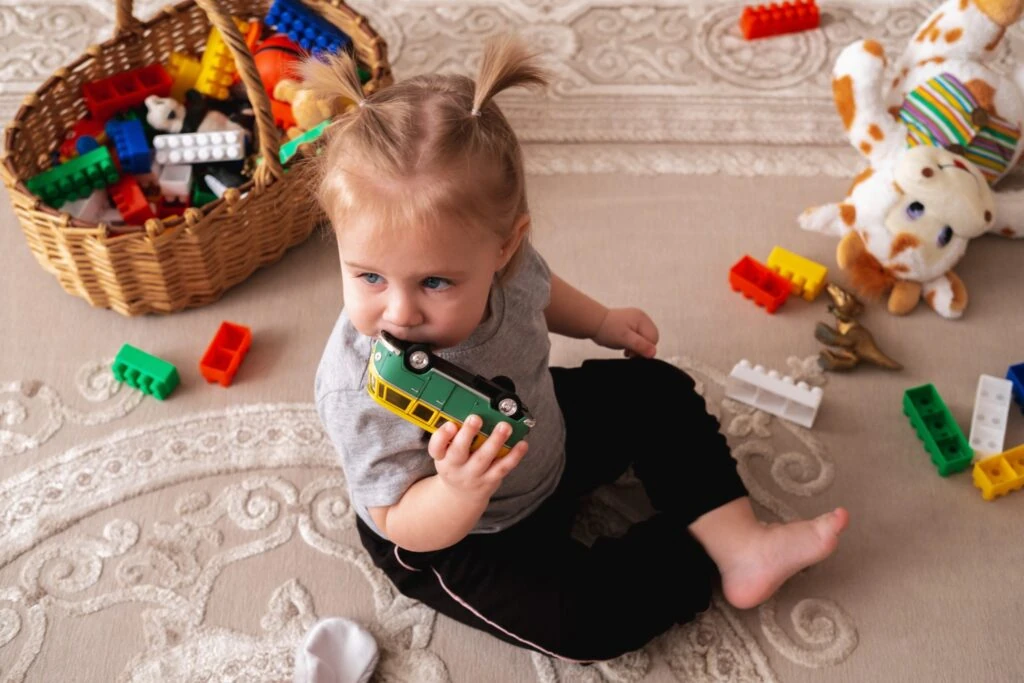
The first phase of play actions is Sensory Exploration.
During this stage, children handle and explore objects to make their own choices and decisions and start to understand the world around them by its sensory attributes.
Examples of play actions during Sensory Exploration:
- Mouth
- Grab
- Rub
- Drop
- Shake
- Throw
- Hit
- … and more.
The inner drive is “What is it?“
Phase 2: Usage Exploration
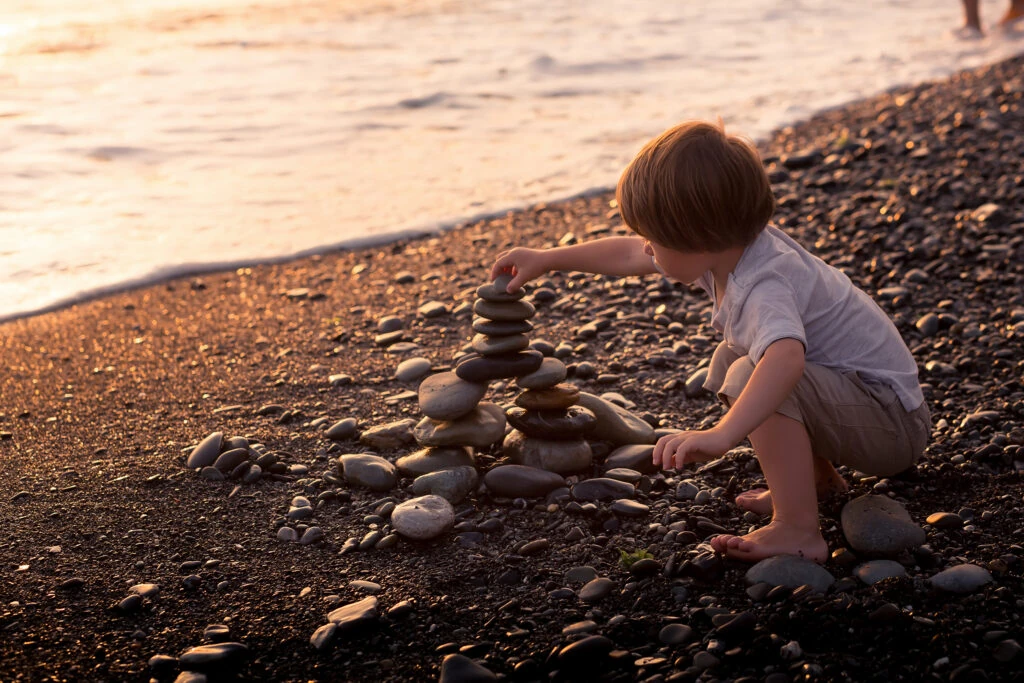
After Sensory Exploration comes Usage Exploration.
Children begin to test the use of objects during this phase, and motor-based manipulation arises. It is coming to know something by its physical use attributes and experimenting with objects to see what they can do.
Examples of play actions during Usage Exploration:
- Bang two objects together (noise)
- Stack and knockdown
- Pour from one container to another
- Carry and dump objects
- Scoop
- Push
- Pull
- Kick
- Squeeze
- … and more.
The inner drive is “What will it do?”
Phase 3: Imitation
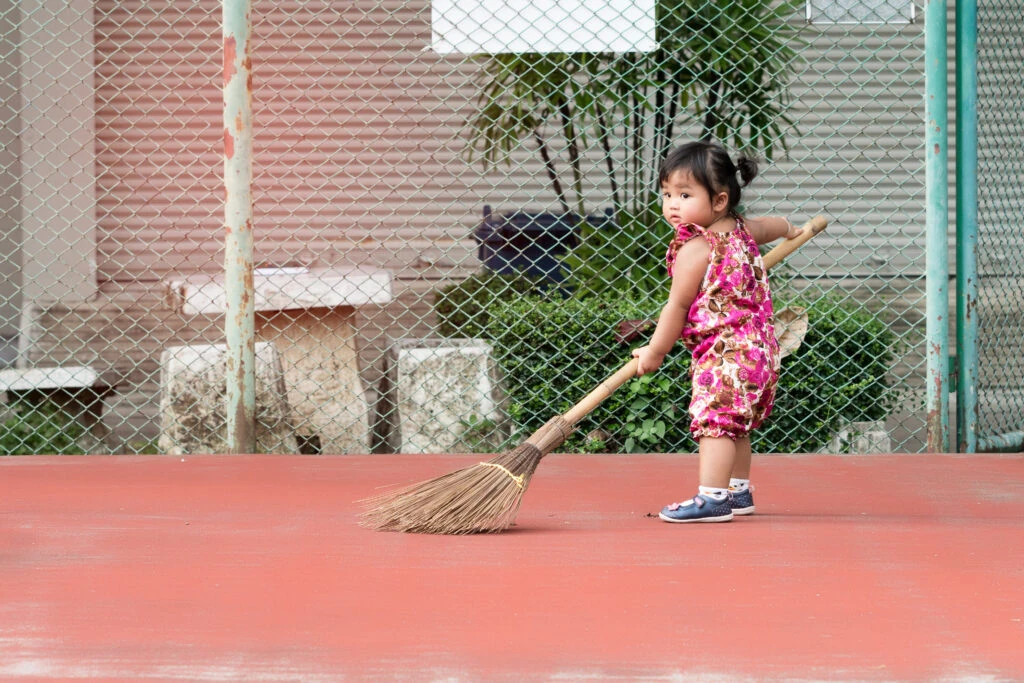
After testing the use of objects, there is a stage of practicing play, or what is commonly called imitation.
During this phase, children experiment with real objects in how they see them used. Here the child is testing – can I do it myself? A very exciting and challenging stage!
Examples of play actions during Imitation:
- Brushing their own hair with a brush or comb
- Stirring
- Sweeping the floor
- Feeding themselves with a cup and spoon
- Washing with a rag or cloth
- Sleeping on pillow
- and more.
The inner drive is “Can I do it?”
Phase 4: Constructional Play
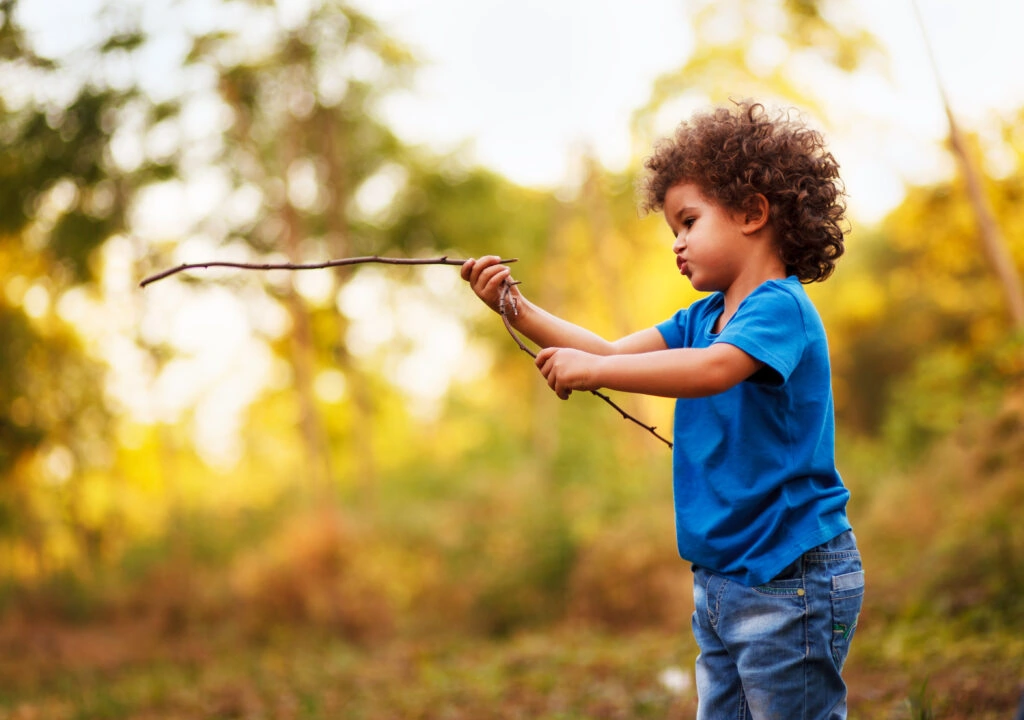
The fourth phase of play actions is Constructional Play, which is the beginning of symbolic play.
During this phase, children start to use objects to represent ideas and transform them into something else. They begin to understand that one object can represent something else entirely.
Here the child is experimenting with transforming objects. This is now that!
Examples of play actions during Constructional Play:
- Block becomes car
- Spoon becomes key
- Large wooden cookies become beds for dolls
- Box becomes a vet’s hospital bed
- A stick becomes an airplane
- … and more.
The inner drive is “This is that!“
Phase 5: Dramatic Play

The final phase of play actions is Dramatic Play, which is the second phase of symbolic play.
During this phase, children transform not only objects but themselves to create imaginative scenarios where they pretend to be someone or something else. ”I” am now that!
Examples of play actions during Dramatic Play:
- Using a cape to become a superhero
- Using a bowl and spoon to become a mommy,
- Using a ball as food to become a tiger,
- Using a stick as a sword to become a bad guy
- Using tubes as raceways to become a race car driver.
The inner drive is “What can I become?”
Conclusion
Loose parts play is a fantastic way to encourage children to engage in meaningful play.
By understanding the benefits of loose parts play and the different phases of play actions (the actual use of objects), we can choose the most suitable materials and create a rich play environment that supports children’s learning and development.
It is important to always keep in mind children can be anywhere in the progression, at any age.
Observe your children and take note of how are they using loose parts so you can make informed decisions on what, how, and why you are offering those materials.
References
Athey, Chris (2007). Extending Thought in Young Children: A Parent – Teacher Partnership. SAGE.
Beaty, Janice J. (2013). Observing Development of the Young Child. Pearson.
Fawcett, Mary (2009). Learning Through Child Observation. Jessica Kingsley Publishers.
